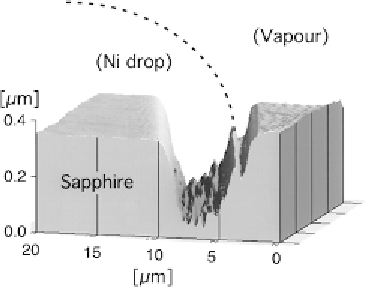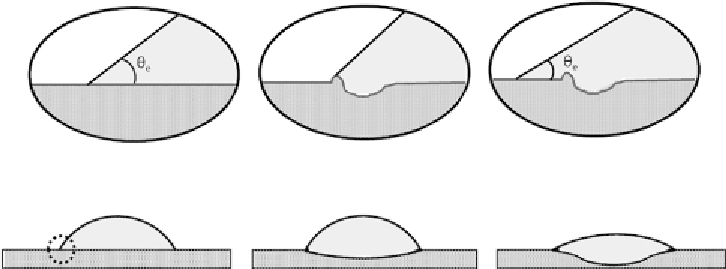Biomedical Engineering Reference
In-Depth Information
Figure 3.
AFM scan of the reaction ring produced by molten Ni on a sapphire substrate, after complete
removal of the Ni drop. The Ni drop free surface is marked schematically by a dashed curve. The scan
reveals the presence of a relative large
ridge
located at the triple line junction, and of a deep
groove
adjacent to it, located beneath the drop, due to dissolution into liquid Ni of sapphire (reprinted from
[57] with permission).
Figure 4.
Ridge and groove formation and pinning effects.
Figure 5.
Evolution of a drop in the presence of dissolution.
initial one, as soon as it reaches a critical value which allows for 'depinning' to
take place (see below) (Fig. 4), the (saturated) liquid drop spreads over the solid
surface producing a final profile similar to that shown in Fig. 5, where the resulting
solid-liquid interface can assume a characteristic sigmoidal profile [58].
3. Reactive Wetting
Reactive wetting, proper, means that chemical interactions occur at the solid-liquid
interface, with the production of new species which in turn can modify profoundly
the wetting behaviour of the system, through the formation of interfacial new phases
that have different wetting characteristics. Much debate can be found in the liter-
ature, especially as concerns the role that the free energy of reaction can have on
the final contact angle. Good reviews/viewpoints on this topic can be found in Refs
[12, 19, 21, 41, 44, 59-61]. It is clear that wetting, especially in reactive systems, is


Search WWH ::

Custom Search